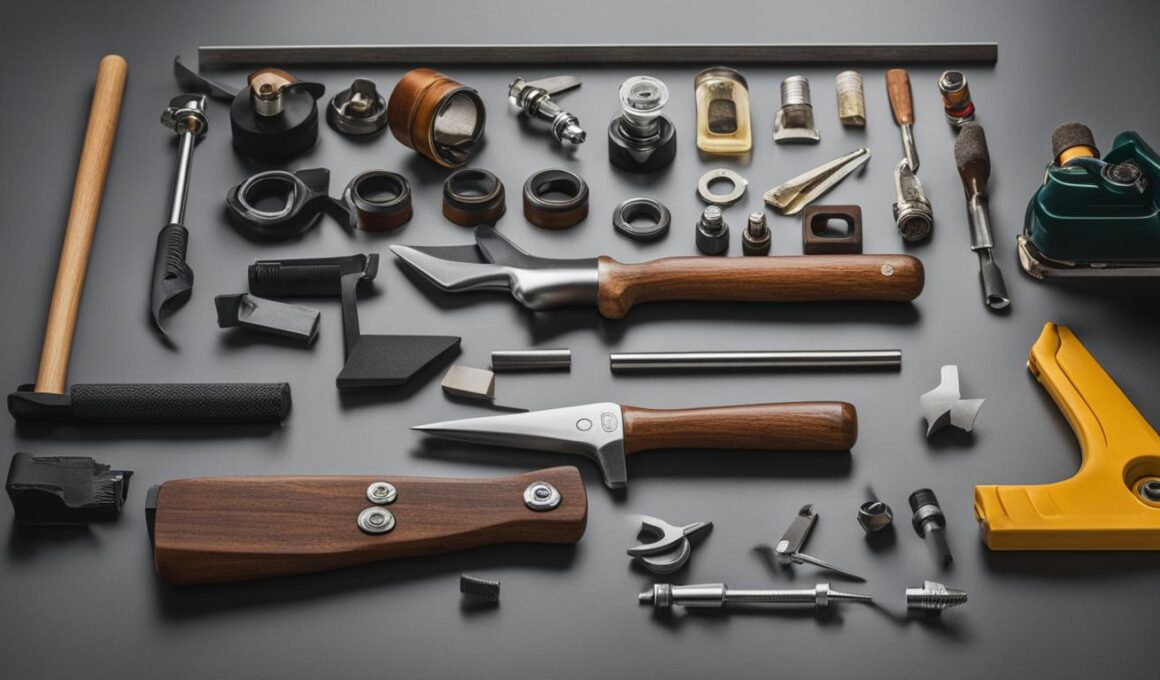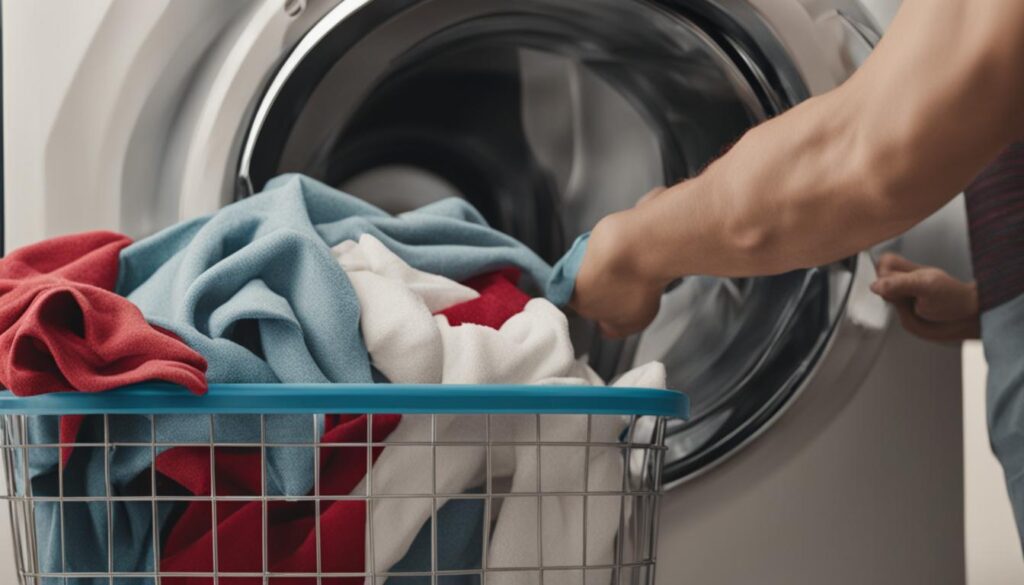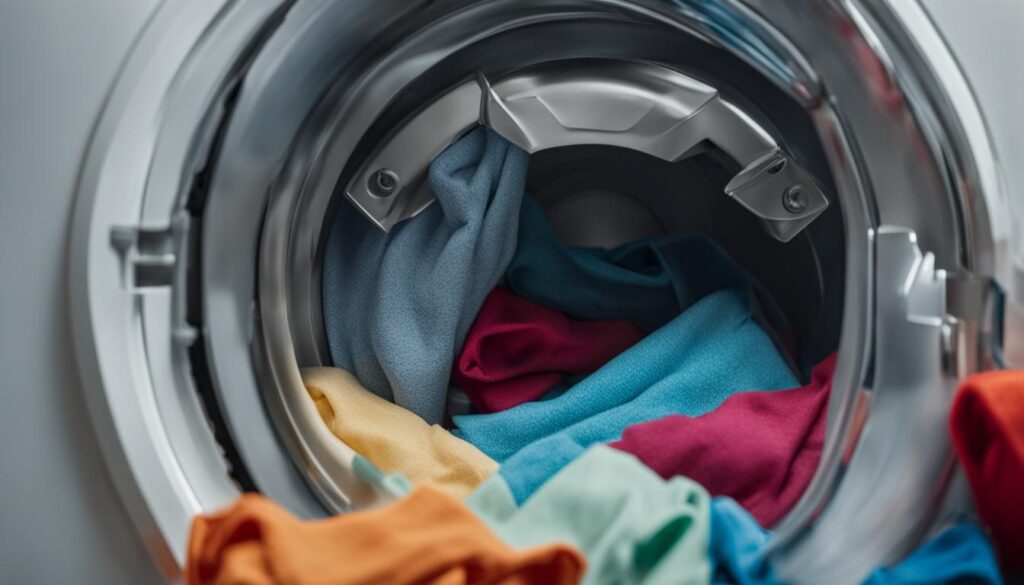Welcome to our guide on quick fixes for common household problems. We understand that dealing with household issues can be frustrating, but don’t worry, we’ve got you covered. In this article, we will provide you with practical solutions for a range of common problems, from laundry mishaps to malfunctioning appliances. With these quick fixes, you’ll be able to save time, money, and avoid unnecessary stress. So let’s dive in and find the solutions you need!
Post Summary
- Learn how to adjust the water temperature for optimal cleaning results when doing laundry
- Discover the simple steps to stop a washing machine from walking during the spin cycle
- Find out what to do when your A/C is not working properly
- Discover the benefits of touch-up paint for appliances and how to use it effectively
- Understand how to diagnose and fix appliance problems using fault codes
Quick Fix for Cleaning Clothes
When it comes to cleaning clothes, getting the temperature right is essential for optimal results. Washing machine manufacturers recommend a water temperature range of 65-85 degrees Fahrenheit for effective cleaning. If the water is too cold, your laundry detergent won’t work as effectively.
To ensure your clothes are getting a thorough wash, you can easily check the water temperature using a cooking thermometer. Simply place the thermometer in the water during the wash cycle to determine if it falls within the recommended range. If the temperature is too low, you can adjust the water setting accordingly.
Another tip to keep in mind is to leave your rinse settings on cold. This not only saves energy but also ensures that your clothes are thoroughly rinsed without any detergent residue. So, remember to adjust the water temperature and rinse settings to achieve cleaner and fresher-smelling laundry.
Quick Fix for Cleaning Clothes:
- Check the water temperature using a cooking thermometer.
- Adjust the water setting if the temperature is too low.
- Leave rinse settings on cold for thorough rinsing.
By following these simple tips, you can ensure that your clothes are getting a deep clean and coming out fresh and odor-free.
Quick Fix for Stopping Washing Machine Walk
If your washing machine is making loud thumping noises and moving across the floor during the spin cycle, don’t worry, there’s a quick fix for that. The problem may be that your washing machine is not properly leveled. Fortunately, adjusting the legs can solve this issue and prevent further disruptions.
To stop your washing machine from walking, first, check if it is level from front to back. Start by placing a level on top of the machine and see if it tilts forwards or backward. If it does, you can adjust the front legs to make it level. Turn the adjustable feet counterclockwise to lengthen them and clockwise to shorten them. Keep adjusting until the machine is stable and level.
If the machine still moves after adjusting the front legs, you may need to check and adjust the self-adjusting rear legs as well. To do this, tilt the machine slightly and tap the legs to break the self-leveling support loose. Once the legs are free, adjust them until they are firmly in contact with the floor and provide proper stability.
By taking these simple steps to level your washing machine, you can ensure smoother operation and eliminate any potential movement or noise during the spin cycle.
Summary of Quick Fix for Stopping Washing Machine Walk
| Steps | Instructions |
|---|---|
| 1 | Check if the machine is level from front to back using a level. |
| 2 | Adjust the front legs by turning them counterclockwise to lengthen or clockwise to shorten until the machine is level. |
| 3 | If the machine still moves, tilt it slightly and tap the self-adjusting rear legs to break the self-leveling support loose. |
| 4 | Adjust the rear legs until they are firmly in contact with the floor and provide proper stability. |
Quick Fix for A/C Not Working
If you find that your A/C is not working properly, there are a few quick fixes that you can try before calling a professional. One common issue is the compressor being in a high compression mode, which can cause the A/C to stop working temporarily. In this case, it’s recommended to wait for a few minutes before turning on the A/C again to allow the compressor to reset.
Another common problem that can cause your A/C to stop working is a blown fuse. The fuse is usually located near the outside unit of the A/C. To fix this issue, you can check the fuse and replace it if necessary. Be sure to turn off the power before replacing the fuse to avoid any electrical hazards.
“If your A/C is not working, try waiting for a few minutes before turning it back on. This can often resolve the issue without the need for any further troubleshooting or repairs.” – HVAC Technician
In addition to the compressor and fuse, a clogged filter can also prevent the A/C from working efficiently. A dirty or clogged filter restricts airflow, making it harder for the A/C to cool the air. To fix this issue, simply replace the clogged filter with a new one. It’s recommended to check and replace the filter regularly, especially during the peak cooling seasons.
| Issue | Solution |
|---|---|
| Compressor in high compression mode | Wait a few minutes before turning on the A/C again |
| Blown fuse | Check and replace the fuse if necessary |
| Clogged filter | Replace the filter with a new one |
By trying these quick fixes, you may be able to restore your A/C’s functionality without the need for costly repairs or professional assistance. However, if the issue persists or you’re unsure about performing any repairs yourself, it’s always best to consult with an HVAC technician to ensure proper diagnosis and resolution of the problem.
| Appliance Problem | Quick Fix |
|---|---|
| Scratches or chips on appliances | Use touch-up paint to cover them |
| Appliances not working with batteries | Clean battery contact points with vinegar or lemon juice |
| Appliance displaying a fault code | Refer to the user manual or search online for solutions |
By utilizing these quick fixes for common appliance problems, you can save money on repairs and keep your appliances running smoothly. Remember to always follow safety guidelines and consult a professional if you’re unsure about any repairs. With a little effort and minimal expense, you can extend the lifespan of your appliances and enjoy their reliable performance.
Conclusion
In conclusion, there are plenty of quick fixes available to solve common household problems. By implementing these solutions, you can tackle issues related to cleaning clothes, preventing a washing machine from walking, fixing a malfunctioning A/C, applying touch-up paint on appliances, troubleshooting furnaces or A/Cs, cleaning battery contact points, diagnosing appliance problems using fault codes, starting a disposer that won’t start, fixing an oven that won’t heat, silencing a noisy washer, silencing a squealing hinge, and repairing stripped hinge screws.
These quick fixes provide you with the opportunity to save time, money, and frustration when dealing with common household problems. Instead of waiting for professional help or spending a significant amount of money on repairs, you can take matters into your own hands with these simple DIY solutions. With just a few adjustments or replacements, you’ll be able to restore the functionality and appearance of your appliances and systems.
Remember, tackling common household problems doesn’t have to be complicated or expensive. By utilizing the quick fixes mentioned throughout this article, you’ll become more confident in your ability to maintain and solve issues in your home. So the next time you encounter one of these problems, don’t stress—just refer back to this article and put your newfound knowledge to good use!
FAQ
What is a quick fix for cleaning clothes?
To ensure optimal cleaning, check the water temperature with a cooking thermometer and adjust the water setting to be in the 65-85 degree range. Leaving rinse settings on cold can also save energy.
How can I stop my washing machine from walking?
If your washing machine is moving across the floor during the spin cycle, it may need to be leveled. Adjust the front legs to make the machine level from front to back and tap the self-adjusting rear legs if necessary.
What should I do if my A/C is not working?
If your A/C is not working, wait a few minutes before turning it on again as the compressor may be in a high compression mode. Check for a blown fuse near the outside unit and replace it if necessary. Also, ensure the furnace filter is not clogged to improve heating and cooling.
Are there quick fixes for appliance problems?
Yes, there are several quick fixes for various appliance problems. Use touch-up paint to cover scratches or chips on appliances, clean battery contact points to ensure proper power flow, and use fault codes to diagnose and fix appliance issues.









